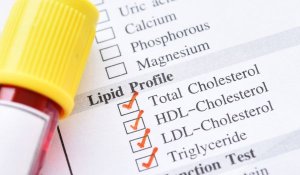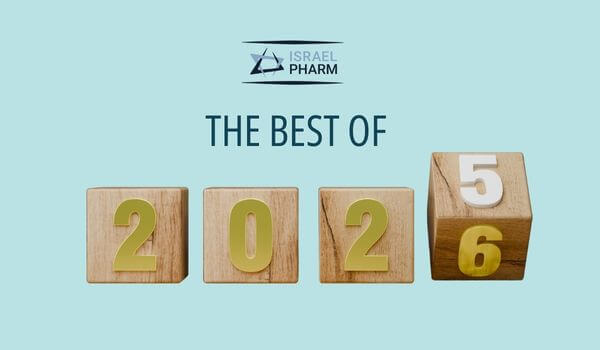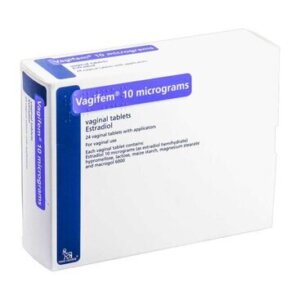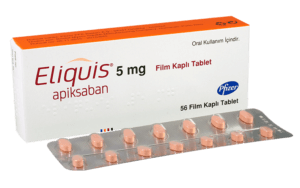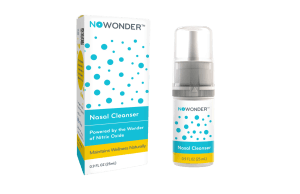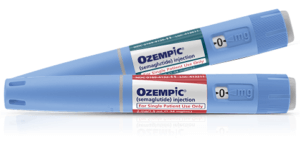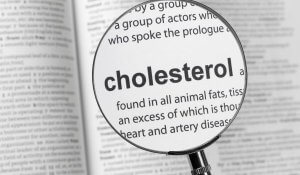 Hyperlipidemia, also known as high cholesterol, is a major risk factor for cardiovascular disease, including heart attack or stroke. This article explains how to prevent and manage high cholesterol through lifestyle choices and medical treatment.
Hyperlipidemia, also known as high cholesterol, is a major risk factor for cardiovascular disease, including heart attack or stroke. This article explains how to prevent and manage high cholesterol through lifestyle choices and medical treatment.
- Prevention focuses on eating less saturated fat and trans fat, getting regular exercise, and maintaining a healthy weight.
- Treatment may include medications that lower LDL cholesterol (also known as bad cholesterol) and raise HDL cholesterol (good cholesterol).
The following is a summary of how cholesterol and triglycerides affect a person’s health, what total cholesterol levels mean, and what steps can be taken if someone has familial hypercholesterolemia. This guide uses plain language to explain the difference between good and bad cholesterol and how people can keep their levels in a healthy range.
About high cholesterol
High cholesterol means there’s too much cholesterol and triglycerides in the blood. Cholesterol is a waxy substance that the body needs in small amounts, but too much of it can clog blood vessels and increase the risk of heart problems. The body makes cholesterol naturally, but it also comes from the food a person eats. This includes saturated fat and trans fat, which are often found in fried food, baked goods, and fatty meats.
What is high cholesterol?
High cholesterol, or hyperlipidemia, happens when levels of LDL cholesterol (bad cholesterol) or total cholesterol are too high. HDL cholesterol (good cholesterol) helps remove extra cholesterol from the blood. High LDL and low HDL levels raise the risk of a heart attack or stroke. A total cholesterol number above 200 mg/dL is considered high for many people. Some people inherit high cholesterol through a condition called familial hypercholesterolemia.
What are the signs and symptoms of high cholesterol?
High cholesterol usually has no symptoms, which is why it’s often called a “silent” condition. Most people find out they have it through a blood test. Over time, if left untreated, it can lead to clogged arteries, chest pain, or serious events like a heart attack or stroke. In rare cases, yellowish deposits called xanthomas may appear on the skin or around the eyes, especially in people with familial hypercholesterolemia.
About treating high cholesterol 
What FDA-approved treatments for high cholesterol are available?
There are several FDA-approved medicines to lower high cholesterol. Treatments by statins are the most common and help reduce the amount of cholesterol the liver makes. Examples are:
- Lipitor (atorvastatin)
- Lescol (fluvastatin)
- Livalo (pitavastatin)
- Pravachol (pravastatin)
- Crestor (rosuvastatin)
- Zocor (simvastatin)
Statins primarily work by inhibiting an enzyme called HMG-CoA reductase, which is crucial for cholesterol production in the liver. This inhibition leads to reduced production of cholesterol and an increase in the number of LDL (low-density lipoprotein) receptors on liver cells, which clears LDL cholesterol from the bloodstream.
Other more advanced options include:
- PCSK9 inhibitors such as Praluent (alirocumab) and Repatha (evolocumab), which prevent the degradation of LDL cholesterol receptors in the liver, allowing more receptors to remain on the cell surface and clear LDL cholesterol from the bloodstream
- Cholesterol absorption inhibitors, such as Zetia (ezetimibe), which inhibit the absorption of cholesterol in the small intestine, leading to a decrease in the amount of cholesterol delivered to the liver
- Adenosine triphosphate-citrate lyase (ACL) inhibitors such as Nexletol (bempedoic acid) or Nexlizet (combination of bempedoic acid/ezetimibe), which slow down cholesterol production in the liver
- Fibrates such as Tricor (fenofibrate), which activate an enzyme called lipoprotein lipase, which increases the breakdown of lipids and the elimination of triglyceride-rich particles from the blood.
All of these treatments help lower LDL and raise HDL cholesterol to improve overall heart health.
How do current treatments help high cholesterol?
Current treatments aim to lower bad cholesterol and reduce the risk of cardiovascular disease. Statins have been shown in many studies to reduce the risk of heart attack or stroke by lowering LDL cholesterol. PCSK9 inhibitors can further reduce LDL levels for people with very high cholesterol or familial hypercholesterolemia. Zetia and other medications work best when combined with a heart-healthy lifestyle. Together, they help manage cholesterol and protect the heart.
Are there off-label treatments for high cholesterol?
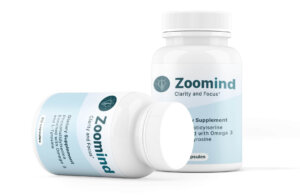
What are the most common side effects of treatments for high cholesterol?
The most common side effects of statins include muscle aches, tiredness, and digestive issues. Some people may also experience changes in liver enzymes. PCSK9 inhibitors can cause injection site reactions and cold-like symptoms. Ezetimibe may lead to stomach pain or diarrhea. Side effects are usually mild and manageable, but it’s important to talk to a doctor if anything feels unusual while taking these medications.
Conclusion
High cholesterol can go unnoticed for years, but it has serious effects on heart health if not treated. Luckily, there are many effective ways to prevent and manage it. Healthy eating, especially cutting down on saturated fat and trans fat, along with regular physical activity and weight control, is key to prevention. If lifestyle changes aren’t enough, medications can help lower LDL cholesterol and improve a person’s chances of avoiding a heart attack or stroke. People with conditions like familial hypercholesterolemia may need more aggressive treatment, but can still manage their risk well with proper care. Knowing the numbers, total cholesterol, LDL, HDL, and triglycerides, is the first step. From there, a mix of healthy habits and medications can help a person take control and protect their heart for the long term.
Frequently asked questions about high cholesterol.
Does hyperlipidemia ever go away?
Hyperlipidemia usually doesn’t go away completely, but it can be managed very well. In some cases, if it’s caused mainly by diet or lifestyle, people who make big changes, like eating healthier, exercising regularly, and losing weight, can bring their cholesterol levels back into the normal range. However, if the condition is genetic (like familial hypercholesterolemia), lifelong treatment may be needed. Medications such as statins or other cholesterol-lowering drugs may help keep it under control. The goal is not necessarily to “cure” hyperlipidemia but to lower the risk of heart attack or stroke by keeping cholesterol and triglycerides at safe levels.
Does high cholesterol make you gain weight?
High cholesterol itself doesn’t directly cause weight gain, but they often go hand-in-hand. People who eat a lot of foods high in saturated fat or trans fat, like fried food, fatty meats, and sugary snacks, are more likely to gain weight and have high cholesterol. On the flip side, being overweight or obese can raise LDL cholesterol and lower HDL cholesterol, making the problem worse. Managing weight with healthy food choices and regular physical activity can improve both your weight and your cholesterol and triglyceride levels.
How does your body feel when your cholesterol is too high?
Most of the time, you don’t “feel” anything when your cholesterol is high. That’s why doctors call it a “silent” problem. But over time, high LDL cholesterol can build up in your arteries and cause serious problems like a heart attack or stroke. Some people with extremely high cholesterol, especially those with familial hypercholesterolemia, may notice small yellow lumps on their skin called xanthomas. These are rare. In general, the only way to know if your cholesterol is high is to get a blood test called a lipid panel.
Can high lipids make you tired?
High cholesterol itself doesn’t usually make you feel tired, but if it leads to other health issues like narrowed arteries or cardiovascular disease, you might feel more tired than usual. Reduced blood flow can make everyday activities feel harder. Also, people with high cholesterol sometimes take medications like statins, and one of the more common side effects of statins is fatigue or muscle aches. If you’re feeling very tired and have high cholesterol and triglycerides, it’s a good idea to talk with your doctor to rule out other causes.
Does drinking water help with hyperlipidemia?
Drinking more water is beneficial for your overall health, but it doesn’t directly lower LDL cholesterol or treat hyperlipidemia. That said, staying hydrated helps your body work better, , including your liver, which plays a big role in processing cholesterol. Some people find that drinking water instead of sugary drinks like soda or juice can help reduce their calorie and sugar intake, which may improve their cholesterol levels over time. So while water isn’t a treatment on its own, it’s definitely part of a healthier lifestyle.
How long does it take to reverse hyperlipidemia?
How long it takes to lower cholesterol and triglycerides depends on what changes you make and how high your levels are to start with. If you begin taking statins or another cholesterol-lowering medication, you may see improvement in just 4 to 6 weeks. If you’re working on it through diet and exercise alone, it could take a few months or longer. People with familial hypercholesterolemia may need lifelong treatment. The key is staying consistent. Cut back on saturated fat, eat more fiber, exercise regularly, and check your levels with your doctor.
What is a dangerously high cholesterol level?
A total cholesterol level above 240 mg/dL is considered high, and anything above 300 mg/dL is often seen as dangerously high. But what’s even more important is how the numbers break down: LDL cholesterol (bad cholesterol) should usually be below 100 mg/dL. If your LDL is very high, especially over 190 mg/dL, it increases your risk of a heart attack or stroke. People with very high levels may need medication right away, along with big lifestyle changes. Your doctor can help decide what’s safe for you.
Can you lower cholesterol without medication?
Yes, many people can lower their cholesterol without medicine, especially if their numbers aren’t too high to begin with. Eating less saturated fat and trans fat, avoiding fried and processed foods, and adding more fruits, vegetables, and fiber can help. Exercise is also key. It raises HDL cholesterol (the good kind) and lowers LDL cholesterol. Losing even a small amount of weight can make a big difference. But if your cholesterol stays high or you have familial hypercholesterolemia, medicine may still be needed.
What foods help clear cholesterol?
Foods that are high in fiber, like oats, beans, lentils, fruits, and vegetables, can help lower LDL cholesterol. Healthy fats, like those found in olive oil, avocados, and nuts, are better choices than butter or red meat. Fatty fish like salmon and tuna have omega-3 fatty acids, which help lower triglycerides. Foods rich in plant sterols (like fortified spreads or juices) may also help clear out some of the cholesterol in your body. Avoid foods with trans fat and limit those high in saturated fat.
How often should I check my cholesterol?
Most adults should get their cholesterol checked at least once every 4 to 6 years starting at age 20. If you have risk factors like diabetes, high blood pressure, or a family history of cardiovascular disease, you might need to be tested more often. If you’re on medication or have already been diagnosed with hyperlipidemia, your doctor may want to check your levels every 6 to 12 months. Keeping track of your LDL, HDL, and total cholesterol helps you stay ahead of any problems.
Is high cholesterol always caused by diet?
No, not always. While eating too much saturated fat or trans fat can raise your cholesterol, some people have high levels because of genetics. This is called familial hypercholesterolemia, and it means your body naturally makes too much cholesterol. Even if you eat well and exercise, you might still need medication to help lower your levels. Other health conditions, like thyroid problems or diabetes, can also raise your cholesterol. That’s why it’s important to get tested and talk to your doctor about your personal risk.

